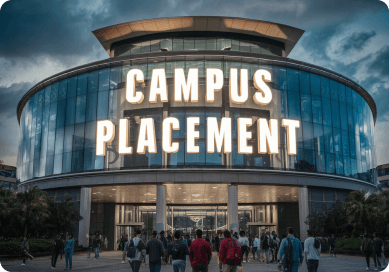Enter OTP



Minneapolis, United States of America

Minneapolis, United States of America

Cost Of Living

Undergraduate Fees International Students

Post Graduate Fees International Students

From 1851 till now, the university has achieved success in its objective and its main goal, which is an outstanding achievement of this university. The University has always strived to make the world a better place with its constant engagement in research and discoveries. The University of Minnesota is one of the members of the Association of American Universities. The alums of the University of Minnesota are recipients of the Nobel Prize and Pulitzer Prize. Many of its alumni are Fulbright Scholars, Rhodes Scholars, etc. The University is known for its brilliant academic performance and research.
Ernest O. Lawrence was awarded the 1939 Nobel Prize in Physics for inventing the cyclotron, a groundbreaking particle ac... View More
Ernest O. Lawrence was awarded the 1939 Nobel Prize in Physics for inventing the cyclotron, a groundbreaking particle accelerator that revolutionized atomic research. His work laid the foundation for advancements in nuclear science and medicine. View Less
Thomas Friedman has won three Pulitzer Prizes: two for International Reporting in 1983 and 1988, and one for Commentary ... View More
Thomas Friedman has won three Pulitzer Prizes: two for International Reporting in 1983 and 1988, and one for Commentary in 2002. Known for his incisive analysis, he is a leading voice on global issues, including economics and Middle Eastern affairs. View Less
Walter Brattain received the 1956 Nobel Prize in Physics for his role in inventing the transistor, a pivotal technology ... View More
Walter Brattain received the 1956 Nobel Prize in Physics for his role in inventing the transistor, a pivotal technology that ushered in the modern electronics era. His work has been instrumental in shaping computing and telecommunications. View Less
Carl Dennis won the Pulitzer Prize for Poetry in 2002 for his collection Practical Gods, which reflects on themes of fai... View More
Carl Dennis won the Pulitzer Prize for Poetry in 2002 for his collection Practical Gods, which reflects on themes of faith, morality, and human connection through eloquent verse. View Less
Melvin Calvin won the 1961 Nobel Prize in Chemistry for elucidating the Calvin cycle, a vital process in photosynthesis.... View More
Melvin Calvin won the 1961 Nobel Prize in Chemistry for elucidating the Calvin cycle, a vital process in photosynthesis. His discoveries deepened our understanding of how plants convert sunlight into energy. View Less
Bob Dylan won the 2016 Nobel Prize in Literature for his profound impact on music and culture through poetic lyrics that... View More
Bob Dylan won the 2016 Nobel Prize in Literature for his profound impact on music and culture through poetic lyrics that explore themes of identity, society, and change. View Less
Norman Borlaug was awarded the 1970 Nobel Peace Prize for his pioneering contributions to the Green Revolution, which dr... View More
Norman Borlaug was awarded the 1970 Nobel Peace Prize for his pioneering contributions to the Green Revolution, which dramatically increased global agricultural productivity and alleviated hunger. View Less
Lars Peter Hansen was awarded the 2013 Nobel Prize in Economic Sciences for his development of the Generalized Method of... View More
Lars Peter Hansen was awarded the 2013 Nobel Prize in Economic Sciences for his development of the Generalized Method of Moments, a statistical tool widely used in macroeconomic analysis. View Less
Edward B. Lewis received the 1995 Nobel Prize in Physiology or Medicine for his research on genetic control of early emb... View More
Edward B. Lewis received the 1995 Nobel Prize in Physiology or Medicine for his research on genetic control of early embryonic development. His work provided profound insights into how genes regulate body patterning. View Less
Brian Kobilka received the 2012 Nobel Prize in Chemistry for his research on G-protein-coupled receptors, which play a c... View More
Brian Kobilka received the 2012 Nobel Prize in Chemistry for his research on G-protein-coupled receptors, which play a crucial role in cell communication and drug development. View Less
Louis J. Ignarro was awarded the 1998 Nobel Prize in Physiology or Medicine for discovering nitric oxide as a signaling ... View More
Louis J. Ignarro was awarded the 1998 Nobel Prize in Physiology or Medicine for discovering nitric oxide as a signaling molecule in the cardiovascular system. His findings have advanced treatments for heart disease. View Less
Daniel McFadden won the 2000 Nobel Prize in Economic Sciences for his development of econometric methods used in analyzi... View More
Daniel McFadden won the 2000 Nobel Prize in Economic Sciences for his development of econometric methods used in analyzing discrete choice. His contributions have greatly influenced behavioral economics. View Less
The University of Minnesota Twin Cities boasts an impressive range of infrastructure facilities that support research, innovation, and campus development. Its research facilities include the University Flow Cytometry Resource (UFCR), offering instrument training and services; the Minnesota Nano Center (MNC), providing tools for micro- and nanoscale device development; the Genomics Center (UMGC), which supports researchers and clinicians with advanced genomic technologies; and the XRCT facility, equipped with a micro-computed tomography scanner for micron-scale imaging. Multiuser instrumentation facilities like the Characterization Facility (CharFac) provide cutting-edge microscopy tools and other advanced instruments.
Various events and festivals are happening around the campus yearly to keep the students busy and entertained. There are multiple clubs and societies that students can be part of according to their interests. There are around 1000 student groups and organizations on the Twin Cities campus. The university has its own magazines and radio station, KUOM. The university's recreation and wellness community also organizes various fitness and wellness programs.


The University of Minnesota Twin Cities offers a comprehensive range of career support services designed to assist students and alumni at every stage of their professional journey. Career & Internship Services supports degree-seeking undergraduates, graduate students, and alumni within two years of graduation with career courses, resume and cover letter reviews, and various events. The Graduate School provides workshops, digital badges, and the 3-Minute Thesis (3MT) competition to enhance students' research and communication skills. CEHD Career Services caters to students and recent graduates from the College of Education and Human Development, offering both on-campus and virtual events, one-on-one and group meetings, and collaboration with faculty and advisors.
The below information is required while
completing the university application :
a) University online application
b) Baccalaureate degree (or higher) earned from a regionally accredited U.S. institution and undergraduate GPA- 3.0
c) Letters of recommendation
d) Scores from either the GRE or the GMAT exam
e) TOEFL/IELTS/MELAB scores if the applicant’s native language is not English
Requirements may vary for each program. Please visit program page for specific requirements.
Know moreThe University of Minnesota Twin Cities offers a range of recruiting opportunities for students and professionals. Faculty and instructor positions, including tenure-track roles, are actively sought, along with postdoctoral positions for research collaboration with faculty members. The university’s recruiting database, Handshake, facilitates on-campus interviews, while the Job Center provides access to thousands of student employment opportunities both on and near campus. Additionally, the Hire UMN initiative connects employers with the university's career services units, streamlining recruiting efforts across its colleges and campuses.



The University of Minnesota Twin Cities has a remarkable history of groundbreaking achievements spanning diverse fields. From revolutionizing heart surgery in 1954 with the cross-circulation technique to performing the first artificial heart valve implant in 1958 and pioneering the world's first kidney/pancreas transplant in 1967, the university has been at the forefront of medical innovation. Beyond healthcare, it developed the beloved Honeycrisp apple in 1991 and established the world’s first Stem Cell Institute in 2000. Recognized for sustainability and innovation, it earned accolades such as the Accredited Sustainable Fleet Award (2017), Bee Campus USA designation (2020), and Bicycle Friendly University Platinum Award (2021).


In 2021, the University of Minnesota Twin Cities received the prestigious Bicycle Friendly University Platinum Award and the Bicycle Friendly Business Platinum Award. These accolades highlight its dedication to sustainable transportation and fostering a bike-friendly campus environment.
In 2020, the university earned the Bee Campus USA designation, showcasing its commitment to pollinator conservation and sustainable landscaping practices. This recognition reflects efforts to create a bee-friendly environment on campus.
In 2019, the university was honored with the ACEC of Minnesota Honor Award for its Combined Heat and Power Plant. This innovative project demonstrated excellence in engineering and environmental stewardship, providing efficient energy solutions for the campus.
In 2017, the university received the Accredited Sustainable Fleet Award from the National Association of Fleet Administrators (NAFA). This award celebrated the university’s leadership in adopting eco-friendly transportation practices.
In 2002, the Smithsonian Institution named the university's Gentle Leader dog leash one of the world’s 100 best innovations. This groundbreaking product revolutionized pet training with its humane and effective design.
In 2000, the university founded the Stem Cell Institute, the first interdisciplinary research center dedicated to stem cell studies. This milestone underscored its leadership in advancing regenerative medicine.
In 1998, the university performed the first living donor pancreas transplant globally. This breakthrough showcased its pioneering work in organ transplantation and patient care.
In 1991, the university introduced the honeycrisp apple, a game-changer in the fruit industry. Known for its crisp texture and sweet-tart flavor, this apple quickly became a consumer favorite.
In 1968, the university carried out the first bone marrow transplant, establishing a new standard for treating life-threatening blood disorders. This innovation laid the groundwork for modern hematology.
In 1967, the university performed the first successful kidney/pancreas transplant, revolutionizing organ transplant practices. This achievement addressed the challenges of diabetes and kidney failure.
The University of Minnesota Twin Cities is home to numerous cutting-edge research facilities and centers that foster innovation across diverse fields. These include the Characterization Facility (CharFac), offering advanced tools for materials research like microscopy and mass spectrometry; the Center for Magnetic Resonance Research (CMRR), specializing in MRI/MRS imaging and signal processing; and the Center for Metabolomics & Proteomics (CMSP), which supports metabolomic and small molecule analyses. Additionally, the Center for Medical Device Cybersecurity (CMDC) ensures the safety of medical devices through industry and government collaboration, while the Inorganometallic Catalyst Design Center (ICDC) pioneers the discovery of new catalytic materials. The Minnesota Robotics Institute (MnRI) leads advancements in robotics research and education, contributing to a dynamic, multidisciplinary ecosystem.
Discovered as the main component of the sea lamprey migratory pheromone, this chemical aids in understanding and controlling sea lamprey behavior for ecological management.
Released by University of Minnesota apple breeders, this apple is celebrated for its crisp texture and sweet-tart flavor, eventually becoming the state fruit of Minnesota.
The University performed one of the earliest bone marrow transplants, revolutionizing treatments for leukemia and other blood disorders.
This groundbreaking procedure paved the way for combined organ transplantation, improving survival rates and quality of life for patients.
Developed by Earl Bakken, this portable device offered a life-saving, mobile solution for patients with heart rhythm disorders and became a cornerstone for Medtronic, Inc.
The University achieved a milestone in cardiovascular medicine by implanting the first artificial heart valve, offering a new lease on life for heart patients.
Created by Richard DeWall and C. Walton Lillehei, this innovation made open-heart surgeries possible by oxygenating blood outside the body.
Pioneered by Lillehei and Lewis, this procedure marked a major advance in cardiac surgery, saving countless lives.
The discovery of this 2,500-mile rust spore route highlighted how rust spores overwinter on wheat in Mexico and Texas, significantly impacting agricultural disease management.













Embark on your educational journey with confidence! Our team of admission experts is here to guide you through the process. Book a free session now to receive personalized advice, assistance with applications, and insights into your dream school. Whether you're applying to college, graduate school, or specialized programs, we're here to help you succeed.
